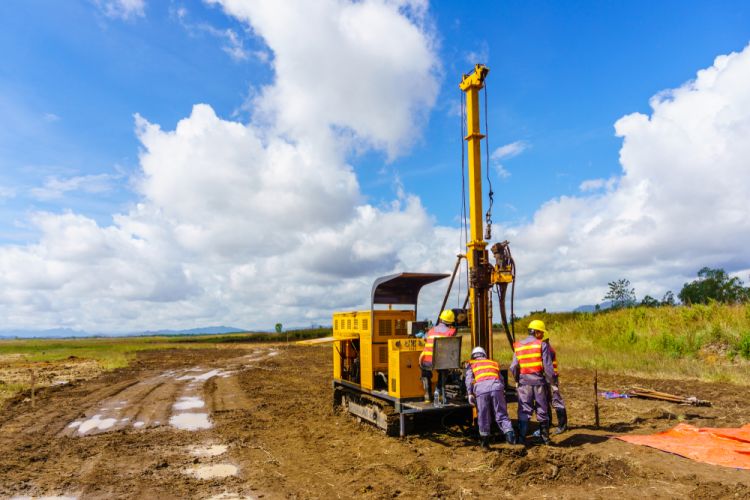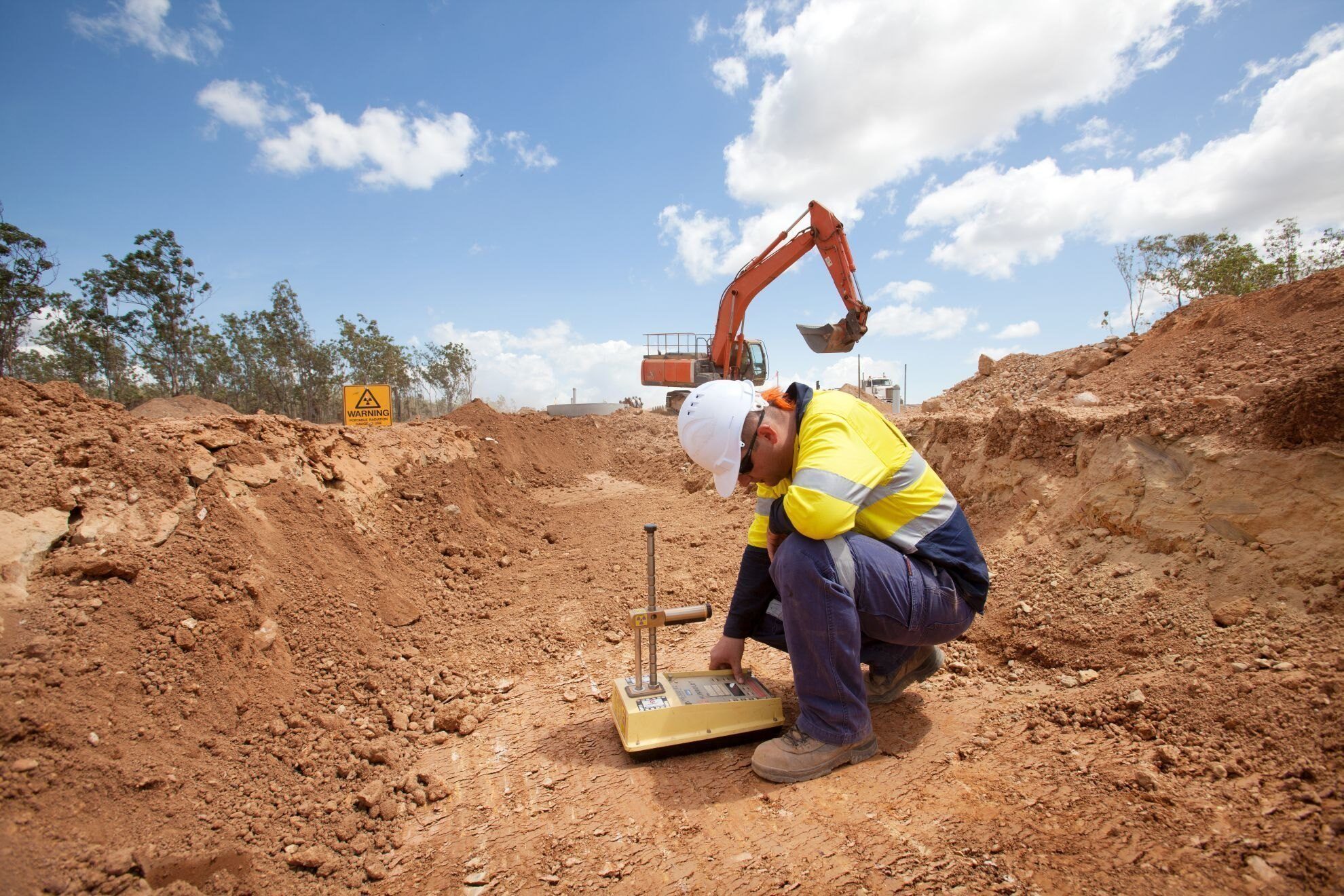The Greatest Guide To Geotechnical Engineering For Construction Projects
The Greatest Guide To Geotechnical Engineering For Construction Projects
Blog Article
The Facts About Geotechnical Engineering For Construction Projects Uncovered
Table of ContentsOur Geotechnical Engineering For Construction Projects StatementsThe 5-Second Trick For Geotechnical Engineering For Construction ProjectsThe Geotechnical Engineering For Construction Projects StatementsAn Unbiased View of Geotechnical Engineering For Construction Projects9 Easy Facts About Geotechnical Engineering For Construction Projects Described
For that reason, during the investigation, it is essential to pierce at the required depth and the needed number of holes according to the referral of the Canadian Structure Style criterion. Occasionally, the owner may save some Geotechnical Examination cost however end up investing greater than the anticipated during the building cost.The responsibilities of the geotechnical expert entail providing material screening for building and construction assistance. Geotechnical Engineering for Construction Projects. Geotechnical designers evaluate all the field test reports to guarantee that construction is taking place according to the job spec. Throughout building, a confirmatory test for soil compaction is done on-site to make certain that no future negotiation occurs
After the concrete is poured -7 days and 28 days- examinations are carried out on concrete samples gathered from the website to make sure that the concrete put fulfills the design criterion. Asphalt core is taken after the Asphalt is laid and compacted to validate that it meets the layout requirement. All lab test reports are evaluated by the Geotechnical Engineer to ensure that it fulfills the job spec.
The Single Strategy To Use For Geotechnical Engineering For Construction Projects
Geotechnical engineering plays an essential duty in ensuring the security of construction jobs. Geotechnical engineering is a vital branch of civil engineering that concentrates on recognizing the practices of earth materials, such as dirt and rock.

For a reputable foundation and a smooth building procedure, depend on to give the knowledge you require. Contact to get specialist recommendations and geotechnical services tailored to your following job.
5 Simple Techniques For Geotechnical Engineering For Construction Projects
When starting a land advancement task, understanding the ground beneath your feet is as important as the frameworks you intend to construct over it. Our Geotechnical Design team analyse the ground, ensuring it appropriates for the proposed development while offering you with the information required to fulfill your task goals.
Geotechnical Engineering considers the development of the ground, as it is the foundation for all jobs. Where frameworks require to be designed relative to the ground conditions; ground conditions (e.g., soft ground) may call for reinforcing depending on the dimension of the desired structure. Prior to structure, you require to know about the groundwater, dirt structure, and liquefaction probability of your land.
For sites that are not attached on the local authority framework extra site examinations would certainly be required to give technical inputs for on-site stormwater and wastewater. We have actually experienced Geotechnical Engineers based in each workplace, sustaining your geotechnical needs across the country. Connect to us to talk about how we can sustain your next task.
These records are customized to meet the details requirements of a job and consist of design specifications and advice for the construction of a series of man-made structures. Along with supplying working as a consultant services covering areas such as incline stability and load-bearing abilities for different products, these engineers take on study and advancement tasks to improve investigate this site methodologies, devices, products knowledge and evaluation covering whole lifecycles.
Some Ideas on Geotechnical Engineering For Construction Projects You Need To Know

Prices of pay usually enhance as your understanding and skills grow, with guidelines directing to a graduate starting salary of in between 18,000 and 28,000 per have a peek at this website year in the UK. This rises to 26,000 to 36,000 with a few years of experience and then getting to 40,000 to 60,000+ for elderly, chartered or master designers.
However, with the best application it is possible to grasp the profession and gain entry to a difficult yet rewarding and important job. A geologist would require to retrain to become a geotechnical engineer, although there is a lot of cross-over in between both occupations, which could make this simpler - Geotechnical Engineering for Construction Projects. Geologists need to have an understanding of dirts, rocks and various other materials from a clinical viewpoint, while geotechnical engineers story their expertise of issues such as soil and rock mechanic, geophysics and hydrology and use them to engineering and environmental tasks
When beginning, these designers will certainly often tend to service much less complicated projects, constructing up understanding and experience all set for even more challenging job later. Geotechnical engineers tend to specialise in specific areas as they grow in experience, concentrating on certain frameworks such as railways, roadways or water. These designers additionally deal with eco-friendly power, offshore and onshore oil and gas, nuclear power, and a lot more.
The Best Strategy To Use For Geotechnical Engineering For Construction Projects
The time taken to become a geotechnical designer depends on where you are based, where you research and what degree of education you want to obtain before getting in the office. Generally-speaking it takes 3-4 years to reach the basic needs to start a career as a geotechnical designer.
These procedures enable professionals to evaluate a host of soil auto mechanics consisting of weight, porosity, void-to-solid bit ratio, permeability, compressibility, optimum shear toughness, birthing capability and contortions. If the structure calls for a deep foundation, engineers will certainly use a cone penetration test to approximate the quantity of skin and end bearing resistance in the subsurface.
When assessing an incline's balance of shear anxiety and shear stamina, or its ability to withstand and undergo redirected here movement, rotational slides and translational slides are generally thought about. Rotational slides fail along a bent surface area, with translational slides occurring on a planar surface area. A professional's objective is to determine the conditions at which a slope failure might occur.
Frequently, searchings for recommend that a site's dirt should be dealt with to improve its shear toughness, stiffness and permeability before design and building and construction. When it comes time to lay out foundation plans, professionals are progressively concentrated on sustainability, even more especially how to minimize a foundation's carbon impact. One tactic has been to replace 20 percent of a structure's concrete with fly ash, a waste product from coal fire power plants.
Report this page